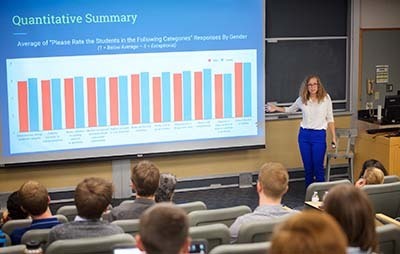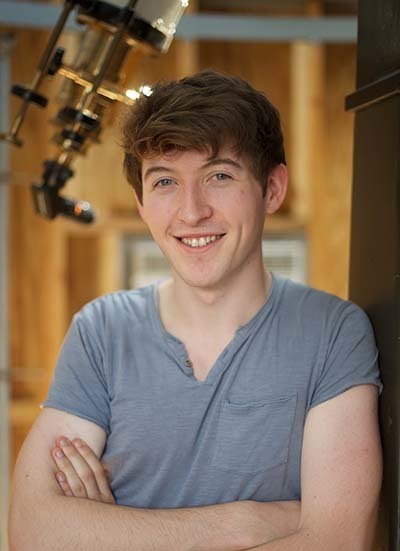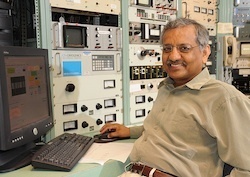
Twenty-seven of the 32 students who participated in the Physics Research Experience for Undergraduates (REU) program capped off their summer with final presentations at the end of July, sharing results of their work on topics as wide-ranging as forgery and supernovae explosions.
 Allison Olshefke
Allison Olshefke
The students packed their 10 weeks of work into 10 minutes, sharing their findings with their new peers from several different universities. The goal of the program is to provide realistic research experiences in order to train the next generation of scientists. Funded by the National Science Foundation, Notre Dame’s REU is in its 31st year, making it the country’s longest-running continuously funded REU program. By design, most of the students who participate in the REU program attend universities other than Notre Dame, and gain valuable research opportunities here that some might not have access to at their home institutions, says Umesh Garg, professor of physics who runs the program with many other professors serving as faculty mentors for the students.
 Cian Roche
Cian Roche
Cian Roche, a student from University College Cork in Ireland, had finished his second year in physics before attending this summer’s REU at Notre Dame. He spent his summer working with Professor Peter Garnavich. Roche attempted to determine whether a particular supernova was formed when two white dwarf stars—star core remnants that are extremely dense—merged, or when a white dwarf star grew by accreting matter from a companion star. To make his determination, Roche compared observation data to a theoretical model.
“The social aspect of the program is pretty great, and my advisor (Garnavich) is the best, giving me lots of one-on-one time. He’s been incredibly helpful,” Roche says. Roche is considering earning a graduate degree in physics, though after just two years hasn’t decided what area of physics he’s most drawn to. This was his first experience with astrophysics, but he wants to continue to explore all areas.
Notre Dame fifth-year senior Connor Bagwell worked with Laura Troyer, a rising senior from Greenville University in Illinois. They were advised by physics professor Philippe Collon on a project to further develop the Accelerator Mass Spectrometry (AMS) radiocarbon dating technique at Notre Dame. Their case study was to test the ages of five wood sculptures from the Snite Museum of Art, because if the wood is younger than can be accounted for in the piece’s history, then it is more likely a forgery.
They turned a minute core of the wood to graphite, and through AMS radiocarbon dating they detected the number of C-14 atoms in the sample. When an animal or plant dies, it stops exchanging carbon with the environment, and the amount of C-14 decreases, or decays. Measuring the amount left can help deduce the age of a sample. Though they attempted to determine whether any of the samples were forgeries, their results were relatively inconclusive because of large error margins, and Bagwell plans to continue refining the procedure.
Troyer, for her part, says the REU program helped her solidify her desire to go to graduate school in physics. “It did also help to narrow down my fields of interest. I realized I’m not as interested in nuclear physics as I am in condensed matter physics,” she says.
 Umesh Garg
Umesh Garg
That Bagwell and Troyer had large error margins—or if others’ experiments did not pan out—does not bother Garg. Doing research perfectly is not the point of the REU program. “The students experience first-hand the pleasures and pitfalls of doing hands-on research; and, based on this exposure, can make an informed decision about choosing research as a career option,” Garg says.
Originally published by at science.nd.edu on September 13, 2017.